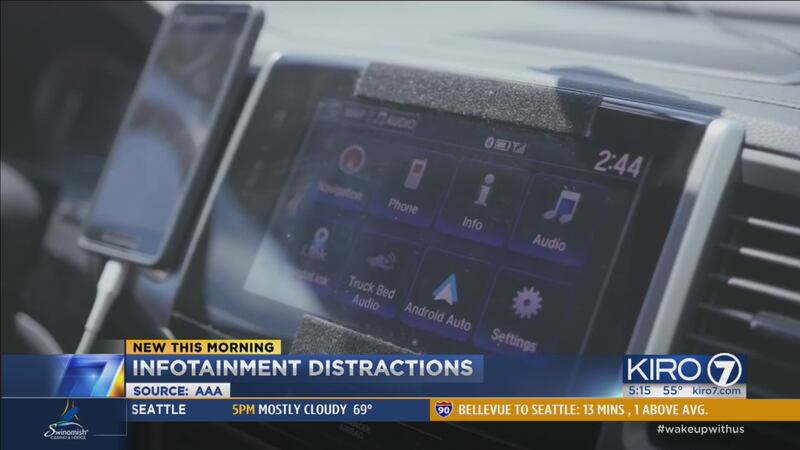The level of distraction on your drive to work depends on what kind of infotainment system you have in your car, according to a new study released by AAA and the University of Utah.
Many new cars on the market come with "infotainment systems" that can be used for all sorts of things such as navigating, making a call, sending a text or programming music.
But according to the study, certain systems are found to be less distracting than others.
Researchers say when drivers use Apple Car Play and Google's Android Auto, they end up taking less time to do things that would take their attention away from the road than they would without the systems.
Experts say it's because the technologies are developed to be easier to use.
But the study warns no system is risk-free and drivers should do things like map out a route before they start driving.
"I would recommend that the drivers program those navigation systems before they start to drive even though you can do some of those features while the vehicle is in motion. That doesn't mean you should nor does it mean that it's safe,” said University of Utah professor David Strayer.
One of the systems that was rated in the study as “very high demand” is the Audi Q7 Premium Plus’ MMI® infotainment system version 443. The study noted that the navigation system allows drivers to search for nearby destinations and input addresses while the car is in motion, creating very high levels of demand.
Other systems rated as “high demand” included but are not limited to The 2017 Buick Enclave Leather’s IntelliLink infotainment system and the 2018 BMW 430i xDrive infotainment system.
On the other side, the 2018 Chevrolet Silverado 1500 MyLink® infotainment system placed moderate demand on drivers in the study.
None of the 40 vehicle infotainment systems produced low demand, while 29 systems generated high or very high levels of demand on drivers.
See the full results of the study at this link.
New numbers show distracted driving injures close to 400 people and kills about 3,500 others a year in the U.S.
The research also found that drivers who take their eyes off the road for more than two seconds - whether to use their infotainment system or to do something else, like reaching for a cellphone - would double the risk of a crash.
Cox Media Group








